The Sky in Japan
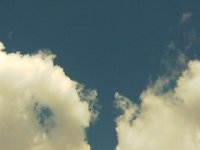 The sky above Osaka Kyoiku Univ. |
 The sky and Clouds around the zenith. |
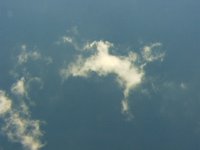 The sky above Osaka Kyoiku Univ. |
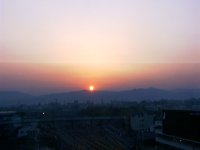 A sunset in Kyoto |
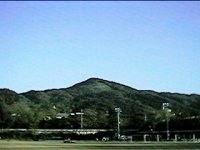 Mt.Daimonji in Kyoto |
 At Osaka Kyoiku Univ. |
| Photograph by K.Tanabe and J.Fukue | ||
The Sky in Foreign Countries
|
太陽の光はプリズムによって,虹色に分解できます. この虹色の光は,色によってそれぞれ波長が異なっています. 青い光ほど波長が短く,赤くなるほど波長は長くなります. このように,太陽の光にはさまざまな色(波長)の光が含まれていますが, この色(波長)の違いが空の青色にも関係しています. 大気中に入射してきた太陽光は, 大気中の空気分子や水蒸気や小さなチリなどに当たって散乱します. 空気分子など非常に微小な粒子による散乱では, 散乱される度合いは波長によって異なることがわかっています. これは「レイリー散乱」と呼ばれます. レイリー散乱の理論によれば, 散乱量は光の波長の4乗に反比例するため, 青い光の方が赤い光よりも, 約16倍もたくさん散乱されるのです (青い光の波長は赤い光の波長の半分ぐらいです). このレイリー散乱の結果, 散乱の度合いが大きくたくさん散乱された青い光が, (太陽の方向とは異なる) あちこちの方向から私たちの目に飛び込んできます. このため空は青く見えるのです.
明け方や夕方には,
太陽の高度が低く地平線付近なので,
昼間に比べて,太陽の光が大気を通過する距離が長くなります.
太陽の光が長い距離を通過してくる間に,
青い光は散乱されてあちこちに飛び散ってしまい,
私たちの目に届く前にほとんど失われてしまいます
(散乱された青い光は,よその地方で青空を作っているのです).
しかし,青い光に比べてあまり散乱されずに残っている赤い光は,
私たちの目に届きます.
このため明け方や夕方の空は赤く見えるのです. |
|
The sunlight is separated into seven rainbow colors by a prism. Each color has a different wavelength of light, nearer to blue light has a shorter wavelength and nearer to red light has a longer wavelength. The blue color of the sky is related to the differences of the color, that is the wavelength, including the white sunlight. The sunlight coming into the air is scattered by molecules of air, drops of water and dust. When minute particles, like molecules, scatter the light, the scattering rate depends on the wavelength of the light. This is called Rayleigh scattering. According to Rayleigh's law, the scattering rate is inversely proportional to the fourth power of the light wavelength. Therefore blue light is scattered 16 times as much as red light is (because the wavelength of blue light is about a half of red's one). Due to Rayleigh scattering, blue light is scattered much more than other light coming into our vision from not only the direction of sun but also every direction. This is the reason why the sky is blue.
Around sunrise and sunset, the height of the sun is low and the sunlight passes through a longer distance in the air than in the daytime.
Since most of blue light is scattered on the long way through the air at that time, it almost not included in the sunlight we see.
The lost blue light makes the sky blue.
On the other hand, the red light passes easily through the air without much scattering.
Thus the sun around sunrise and sunset looks red.
|


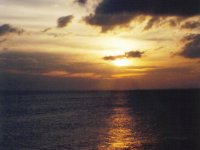
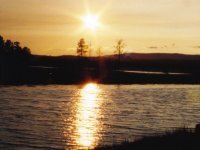
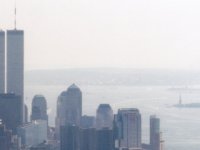
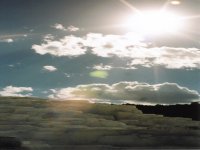
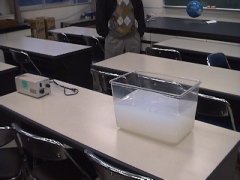
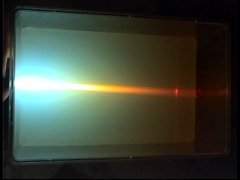
 Go to Submenu
Go to Submenu Go to Menu
Go to Menu